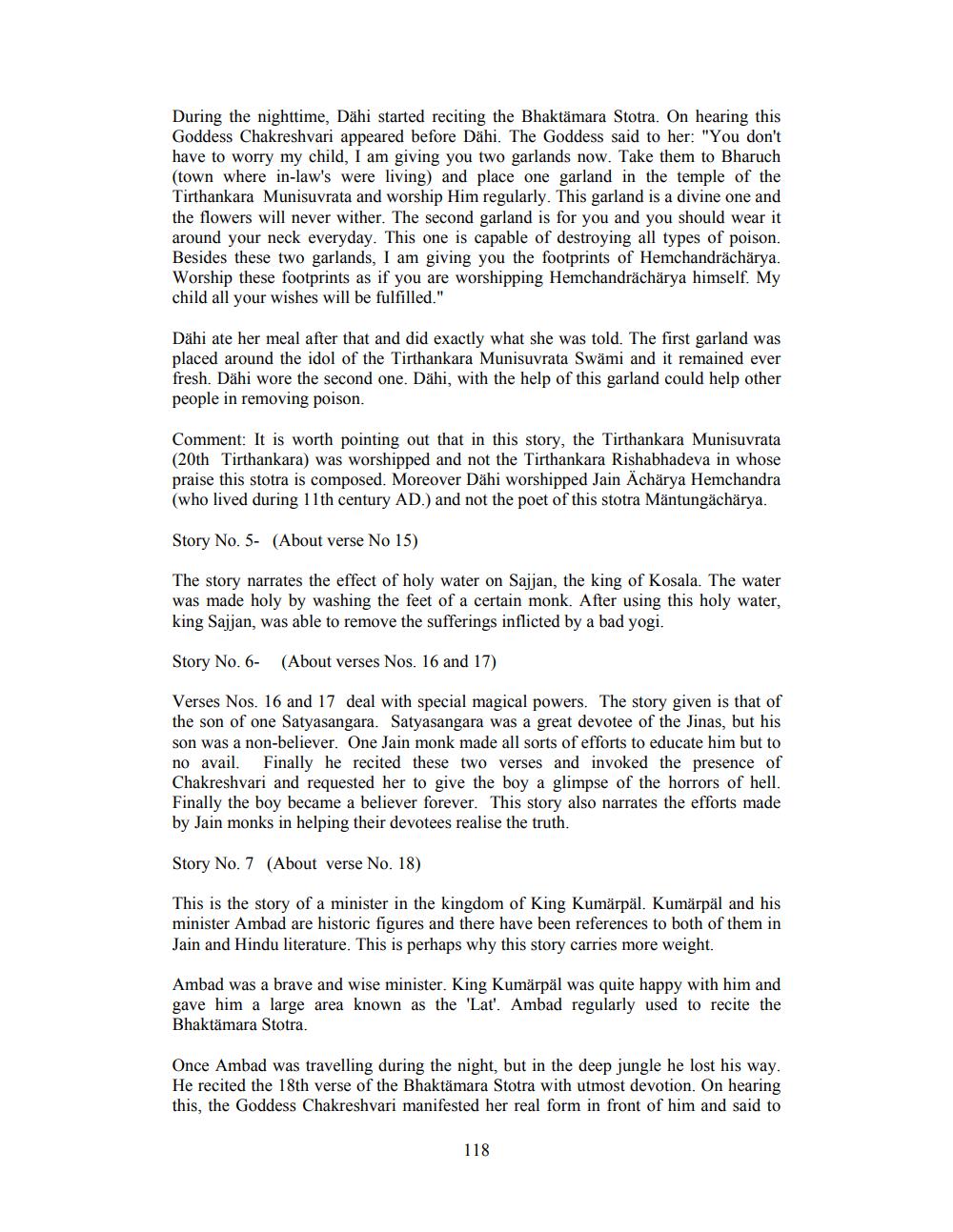________________
During the nighttime, Dähi started reciting the Bhaktämara Stotra. On hearing this Goddess Chakreshvari appeared before Dähi. The Goddess said to her: "You don't have to worry my child, I am giving you two garlands now. Take them to Bharuch (town where in-law's were living) and place one garland in the temple of the Tirthankara Munisuvrata and worship Him regularly. This garland is a divine one and the flowers will never wither. The second garland is for you and you should wear it around your neck everyday. This one is capable of destroying all types of poison. Besides these two garlands, I am giving you the footprints of Hemchandrächärya. Worship these footprints as if you are worshipping Hemchandrächärya himself. My child all your wishes will be fulfilled."
Dähi ate her meal after that and did exactly what she was told. The first garland was placed around the idol of the Tirthankara Munisuvrata Swami and it remained ever fresh. Dähi wore the second one. Dähi, with the help of this garland could help other people in removing poison.
Comment: It is worth pointing out that in this story, the Tirthankara Munisuvrata (20th Tirthankara) was worshipped and not the Tirthankara Rishabhadeva in whose praise this stotra is composed. Moreover Dähi worshipped Jain Acharya Hemchandra (who lived during 11th century AD.) and not the poet of this stotra Mäntungächärya.
Story No. 5- (About verse No 15)
The story narrates the effect of holy water on Sajjan, the king of Kosala. The water was made holy by washing the feet of a certain monk. After using this holy water, king Sajjan, was able to remove the sufferings inflicted by a bad yogi.
Story No. 6-
(About verses Nos. 16 and 17)
Verses Nos. 16 and 17 deal with special magical powers. The story given is that of the son of one Satyasangara. Satyasangara was a great devotee of the Jinas, but his son was a non-believer. One Jain monk made all sorts of efforts to educate him but to no avail. Finally he recited these two verses and invoked the presence of Chakreshvari and requested her to give the boy a glimpse of the horrors of hell. Finally the boy became a believer forever. This story also narrates the efforts made by Jain monks in helping their devotees realise the truth.
Story No. 7 (About verse No. 18)
This is the story of a minister in the kingdom of King Kumärpäl. Kumärpäl and his minister Ambad are historic figures and there have been references to both of them in Jain and Hindu literature. This is perhaps why this story carries more weight.
Ambad was a brave and wise minister. King Kumärpäl was quite happy with him and gave him a large area known as the "Lat'. Ambad regularly used to recite the Bhaktämara Stotra.
Once Ambad was travelling during the night, but in the deep jungle he lost his way, He recited the 18th verse of the Bhaktämara Stotra with utmost devotion. On hearing this, the Goddess Chakreshvari manifested her real form in front of him and said to
118




